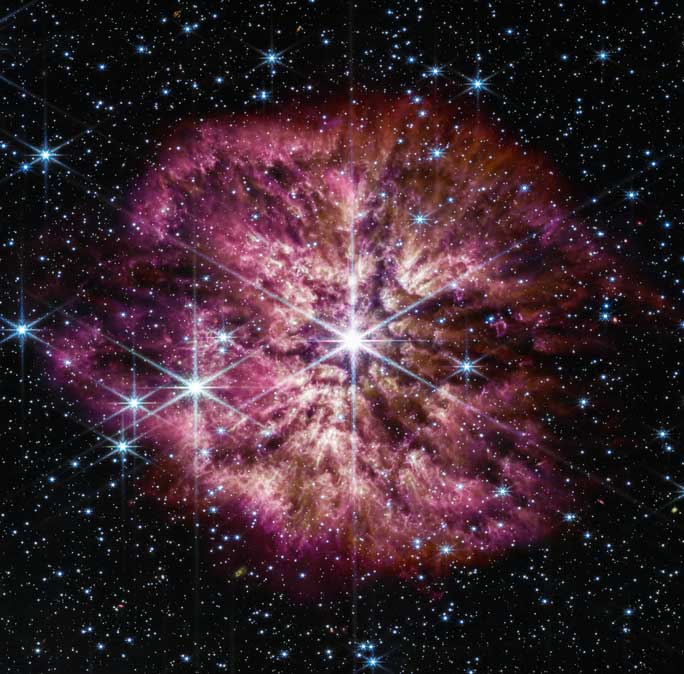Scientists have had their first opportunity to directly observe the birth of a Wolf-Rayet star, a type of “monster” star that is both incredible and shrouded in mystery.
Using the Keck Observatory located on the summit of Mauna Kea in Hawaii, a research team from the United States monitored BELLS 1, a star in the Triangulum Galaxy (Messier 33), and was astonished to see it transform right before their eyes.
According to Space, the initial observations in 2018 showed that this star had three emission lines, but by 2022 it had developed an additional emission line.

A closer Wolf-Rayet monster captured directly by the James Webb Telescope – (Image: NASA/ESA/CSA)
Four years may seem like a long time for humans, but in the lifespan of a cosmic object, it is merely a blink of an eye. Therefore, a significant change occurring over four years indicates that this is not an ordinary phenomenon.
As a Wolf-Rayet star, a type of massive star that is highly energetic and evolves extremely quickly, it also has a short lifespan compared to a normal star like our Sun. The research team from Tufts University (USA) concluded this in their presentation at the 242nd meeting of the American Astronomical Society, recently held in New Mexico.
The observations also revealed that the “monster” BELLS 1 has a tremendous mass, potentially 25 times that of the Sun and is currently 10 million years old.
The wavelengths of the electromagnetic radiation it emits indicate that the star is stirring carbon or iron deep within it through nuclear fusion, suggesting that it is nearing the end of its life and will soon explode into a supernova.
While Wolf-Rayet stars have short lives, their lifespan is still vastly greater than that of humans, making the opportunity to observe this cosmic monster evolving in real-time a once-in-a-millennium chance. Previously, this type of star was only known through data indicating it had already developed into a Wolf-Rayet state, but no one had observed this stage directly.
Continuing to observe it in the future could provide more fascinating insights into how this monster undergoes transformations.
According to NASA, there are only about 200 known Wolf-Rayet stars in our Milky Way galaxy. There may be around 1,000 to 2,000 existing, but they are obscured by thick layers of dust from our perspective on Earth.


















































